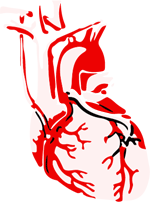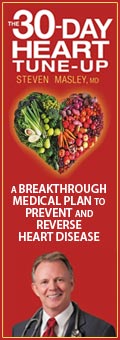What is coronary bypass surgery
A coronary artery bypass is a surgery on the heart used for bridging the narrowing of the coronary arteries – the blood vessels that supply the heart with blood. To bypass this area, surgeon use arteries or veins taken from other places on the body where their presence is not necessary. Bypass are used to transfer blood above the narrowing to the below of the narrowing. This is necessary because the heart needs enough oxygen for normal operation.
Coronary bypass is an operation that the patient needs, to ensure the normal functioning in everyday life. Coronary bypass solves the pain of angina pectoris, prevents myocardial infarction, and he is used in patients who are already have myocardial infarction to prevent further deterioration of myocardial functions. Because of the increase of coronary diseases, bypass is the most commonly performed surgical procedure in the world.
Types of coronary bypass grafts
The vessels used for bypass are referred to as grafts. There are two basic types of coronary bypass grafts: venous and arterial. Venous bypass grafts because of its characteristics of a low quality wall are placed on coronary vessels of lesser importance. Arterial bypass grafts are longer and provide better survival.
Artery bypass graft is the most frequently used and placed on the front of the ventricular branch of the left coronary artery. It is widely accepted and almost obligatory way of bridging the front of the left ventricular branches of the coronary arteries.
Coronary bypass surgery procedure
Coronary bypass surgery usually takes 3-5 hours and during this procedure patient is under general anesthesia. The coronary bypass operation begins with parallel work on the preparation of the chest and extremities (legs or arms) of which arterial or venous grafts are taken. Work on the chest, start with an opening of the sternum, which is cut vertically, and with the help of specially designed instruments, the edge of the sternum is move apart. This allows the surgeon free access to the pericardial cavity (pericardium).
During coronary bypass surgery, the heart is at rest, and all vital functions are supported by the device for extracorporeal circulation. This device provides artificial oxygenation of blood through the physiological level, and the blood flow through all parts of the body, so it is understandable why this machine is slang called artificial “heart-lung.” This form of artificial circulation enables regulation of body, temperature is lowered to the level of mild, moderate or deep hypothermia. Vascular clamp is placed on the ascending aorta of the heart, which is separated from the remaining systemic circulation. In this way it is possible to stop the heart, with administration of cold potassium in the coronary arteries. The heart becomes immobile and relaxed, because the heart stops in diastole phase, which allows you to work quietly.
The coronary bypass surgeon begins coronary heart surgery at the surface, just above, the coronary arteries, with a small cut (incision). The incision extends with a special scissors to a length of 5-8 mm, and then the donor blood vessel (artery or vein) is enjoyed with a special suture materials for the coronary artery. After the completion the surgical operation on the heart, with removal of the aortic clamp, normal blood circulation in coronary arteries will be established. By placing drains in the pericardium and wires for temporary pacemaker surgeon goes into the final phase of the operation. The chest are closed and the patient is transported to the intensive care unit, and thus ends the bypass operation.
In most cases, routine bypass open-heart surgery does not require a blood transfusion. If a transfusion is needed, special measures are implemented to prevent transmission of infectious material in the blood.
Bypass is usually performed on the stopped heart. But in some cases it is possible to do bypass on a working heart. Operations on the so-called beating heart is performed in patients who require smaller number of bypass.
The patient should know that the number of embedded bypasses is relative, and does not indicate to the severity of the disease. The patient who received four bypasses is not necessarily “sicker” than those who received only one bypass. State of the coronary arteries, left ventricle function and comorbidities determines the severity of the disease.
Duration of bypass depends on several factors. One must keep in mind that with a bypass surgeon only bridge narrowing, but cannot stop the progression of the disease, and new narrowing can occur over time under the bypass. Using the artery on front ventricular branch of the left coronary artery is sacrosanct. Patient after bypass surgery must fundamentally change their way of life and diet to extend the maximum duration of bypass.
Minimally invasive heart bypass surgery has the same eligibility for the patient as well as conventional bypass open heart surgery but has the advantage that it can be performed on the beating heart. Patients who have minimally invasive heart bypass surgery have a lighter and shorter recovery and less pain during deep breathing after surgery. Minimally invasive heart bypass surgery brings other advantages such as shorter hospital stay after surgery, less chance of infection, less bleeding, and it is less costly.
Complications after coronary bypass surgery
Complications after coronary bypass open heart surgery may be manifested in varying degrees. However, one of the simplest classification of complications is their classification into two groups: lethal and non lethal. Under lethal complications mean fatal complications were there are the direct cause of death of patients, and fortunately, they are rare. In the second case it is the minor complications that does not significantly threaten the patient and do not influence their treatment and rehabilitation. The big problem arises if the non lethal complications are not recognize on the time and “domino” principle lead to serious disturbances in the body, which in some cases are deadly. The most common bypass complications during bypass open-heart surgery as myocardial infarction, cerebral infarction, neurological problems, lung problems, infections, bleeding disorders, and blood clotting.
Recovery after coronary bypass surgery
Recovery after bypass open-heart surgery has several phases and is influenced by both individual characteristics of the patient, and the type and severity of the operation. After coronary bypass surgery, the patient feels worse, but this is only temporary as a result of trauma during bypass surgery. Therefore, all cardiac hospitals perform preoperative preparation of the patient. It includes not only hygienic and dietetic preparation of the patient, but also a series of talks during which is the testing and psychological preparation of patients for bypass surgery. During his stay at the clinic, patients are gradually introduced to coronary bypass surgery, treatment in intensive care units, as well as measures of early postoperative rehabilitation. Doctors and nurses with their advice and guidance are affecting patients and better prepare patients to their faster adaptation to the environment in which they lived before.
Recovery from coronary bypass surgery takes several weeks, depending on whether it is open heart bypass surgery or minimally invasive heart bypass surgery. After coronary bypass surgery you should take care of high blood cholesterol and a your diet have to adapted to this problem. After coronary bypass surgery it is important to pay attention to hypertension. Patients after coronary bypass surgery should exercise regularly and maintain a healthy body weight. Coronary bypass surgery patients also should be visited regularly doctors, to control the stress, take part in rehabilitation programs, and regular to control a blood sugar. Patients after coronary bypass surgery should pay attention to possible complications and to report any change to their cardiologist. Also, patients must wear elastic support at the place where the veins on the leg has been removed.
Chest cavity need several months to recover from coronary bypass surgery. After coronary bypass surgery, patients can lead a normal life, just in case they follow the advice of a doctor about a healthy life. After coronary bypass surgery, patients are free from angina and have a lower risk of occurrence of the myocardial infarction.
You may also like:
- Heart Attack – acute myocardial infarction
Acute myocardial infarction or heart attack is sudden severe pain in the front of a chest, which leads to hypotension and shock.
- Arteriosclerosis | Arteriosclerotic heart disease
Arteriosclerotic heart disease or coronary artery atherosclerosis is the most common underlying cause of cardiovascular events and death.
- Angina pectoris – (“My heart hurts”)
Tightness or pressure as pain, retrosternal or easy to left (heart hurts). Angina pectoris occurs quickly during exertion, can extend and lose after the break.



